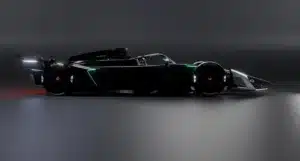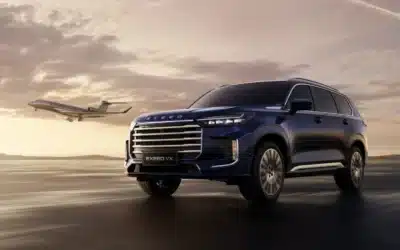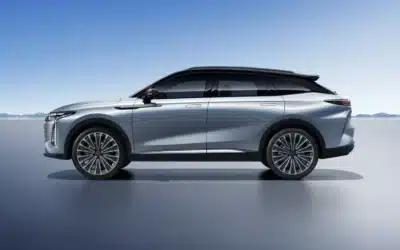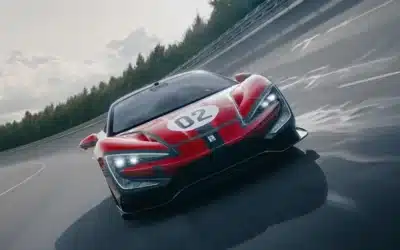Sound, sensation and soul… three attributes that are often considered conspicuous by their absence, when it comes to electric cars. How exactly are these defined? The first two are easy.
The sound emanating from tailpipes and reverberating through the passenger cabin has a measurable influence on heightening excitement levels among driver and occupants.
Studies have demonstrated that the clatter of a euphonious engine can lead directly to an increase in testosterone and, as such, a form of arousal. However, an electric car is relatively silent, save for the subdued hum of a motor, the rumble of rubber on tarmac and at speed, the wind rushing past the windows.
When it comes to sensation, it relates to the visceral tremblings, quiverings and vibrations of mechanical moving parts engaging and disengaging with violent and rapid force. The clunk of gear ratios being changed, the shock of a clutch snapping back, the grating of brake pads tightening their grip.
An electric car has considerably fewer moving parts, usually only a single ratio gearbox because of its constant torque delivery, and regenerative braking through a slowing motor, that often leaves the brake pads and discs redundant.
Finally, we come to the soul, a little trickier to interpret. It’s that certain something, that intangible je ne sais quoi that gives certain cars charisma or personality.
Some perceive electric cars to be insipid, vapid and frankly, dull. Could these accusations be unfair? Is there a case for the defence? Do some EVs aspire to emulate their petrol-powered kin? Well, it would certainly seem so.

The Dodge Charger SRT EV is very powerful, with a 126-decibel artificial engine noise and classic 60s styling. Picture from Stellantis.
Technical Tearaways
Take the Taycan from Porsche, it comes with its own specially formulated soundtrack. One that took some time and dedication to perfect including three weeks at its Nardo Technical Centre in Italy, and hours spent in a soundproof laboratory at the Porsche Development Centre in Weissach. The Porsche Electric Sport Sound is “an entirely innovative sound experience,” the company says.
Like Porsche a number of EV makers are creating bespoke sounds to provide a level of aural stimulation that reflects the petrol car experience. BMW hired the services of Oscar-winning movie composer Hans Zimmer. First experienced in the BMW i4 M50, the M IconicSoundsElectric, is said to express a mixture of “superior power and flowing energy”.
The Hard Chargers
Of course, speed in itself is a sensation and meteoric acceleration can be breath-taking. With electric motors able to deliver uninterrupted and instant momentum, it’s no surprise that several supercar offerings have emerged, all at least as desirable as their V8 or V12 petrol-powered rivals.
Poster-worthy hypercars such as the Rimac C_Two, Pininfarina Battista, and Lotus Evija all offer stupefying sub-two second 0-100kmph acceleration timings. Interestingly, their styling also presents in traditional supercar silhouettes that suggest mid-engine configurations – except that there are no (traditional) engines!
Further down the chain we have sports car offerings. MG, arguably one of the progenitors of the classic roadster, finally plans to return to its roots with the forthcoming Cyberster, a low-slung two-seater convertible sportscar.
MG is not alone, another legendary British sportscar maker, Caterham, which focusses on a raw and pure driving experience, will be revealing its first EV, the Project V sports coupe, in July. Meanwhile Tesla is working on its next generation Roadster, due out in 2024, said to feature ‘rocket thrusters’!
Amped Muscle Cars
Few cars have as much charisma as American muscle cars, and a defining feature is a rumbling, burbling potent V8. Iconic badge names such as Charger, Camaro and Mustang remain hugely evocative.
However, is it possible, or even fair, to appropriate these legendary nameplates for an EV? Ford thinks so, and has successfully introduced and sold the Mustang Mach-E. The EV is a total contradiction to the traditional Mustang, being a large family SUV with Mustang badging and taillights, as opposed to a coupe with a monstrous motor. And yet there is something in the DNA that links it to its illustrious namesake.
Perhaps truer to the personality of a muscle car is the Dodge Charger EV concept that draws heavily on classic 60s styling, with 800-volt architecture that will endow it with more than appropriate electric muscle. Key will be its simulated muscle car sound, with the ‘amplifying chamber’ pumping out 126 decibels of motive growl!
The Simulants
Talking of simulated attributes, Hyundai’s luxury car subsidiary, Genesis has introduced a Virtual Gearshift to its 2023 model-year GV60 family crossover. Drill into the menu and you can switch the paddles behind the steering wheel (normally reserved for setting the level of regen braking) to act as pretend gear shifters.
It faithfully apes a typical paddleshift transmission in a non-EV. Accompanied by synthetic ‘engine noise’ it’s remarkably convincing, particularly in terms of sensation.
Toyota has gone further and patented a fake manual transmission for electric cars and is working on developing it purely for driver entertainment. The shifter mimics a traditional gear change and there would even be a clutch pedal!
Classics with Current
Finally, if you want the most pretend EV of them all, there is an emerging and fast-growing industry of specialists converting classic cars to electric power. These conversions swap the engine and fuel tank with an electric motor and battery pack. Usually everything else is left as it is.
While you won’t hear an engine (although some offer simulated sound) and will be free of the usual engine and oil fumes, you will feel the drivetrain rattle, the suspension squeak, the engagement of the steering and in some cases still be able to change gears. It’s about as veristic an automotive experience as is possible with an EV.











